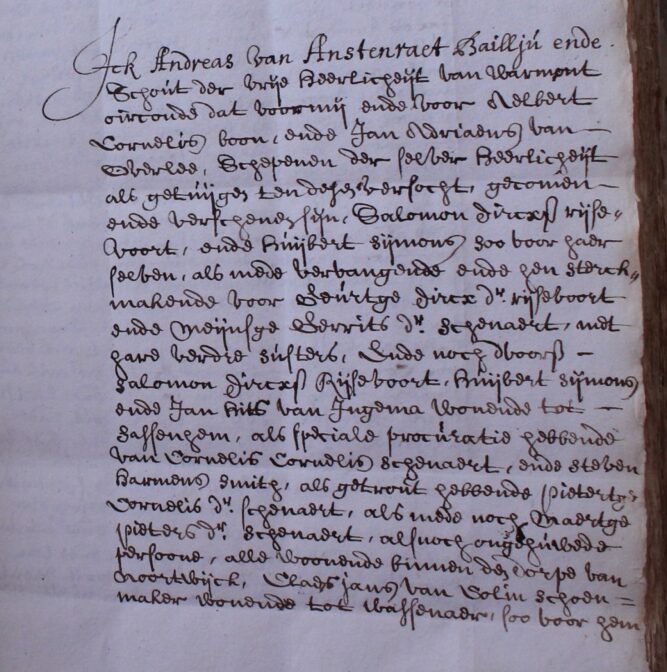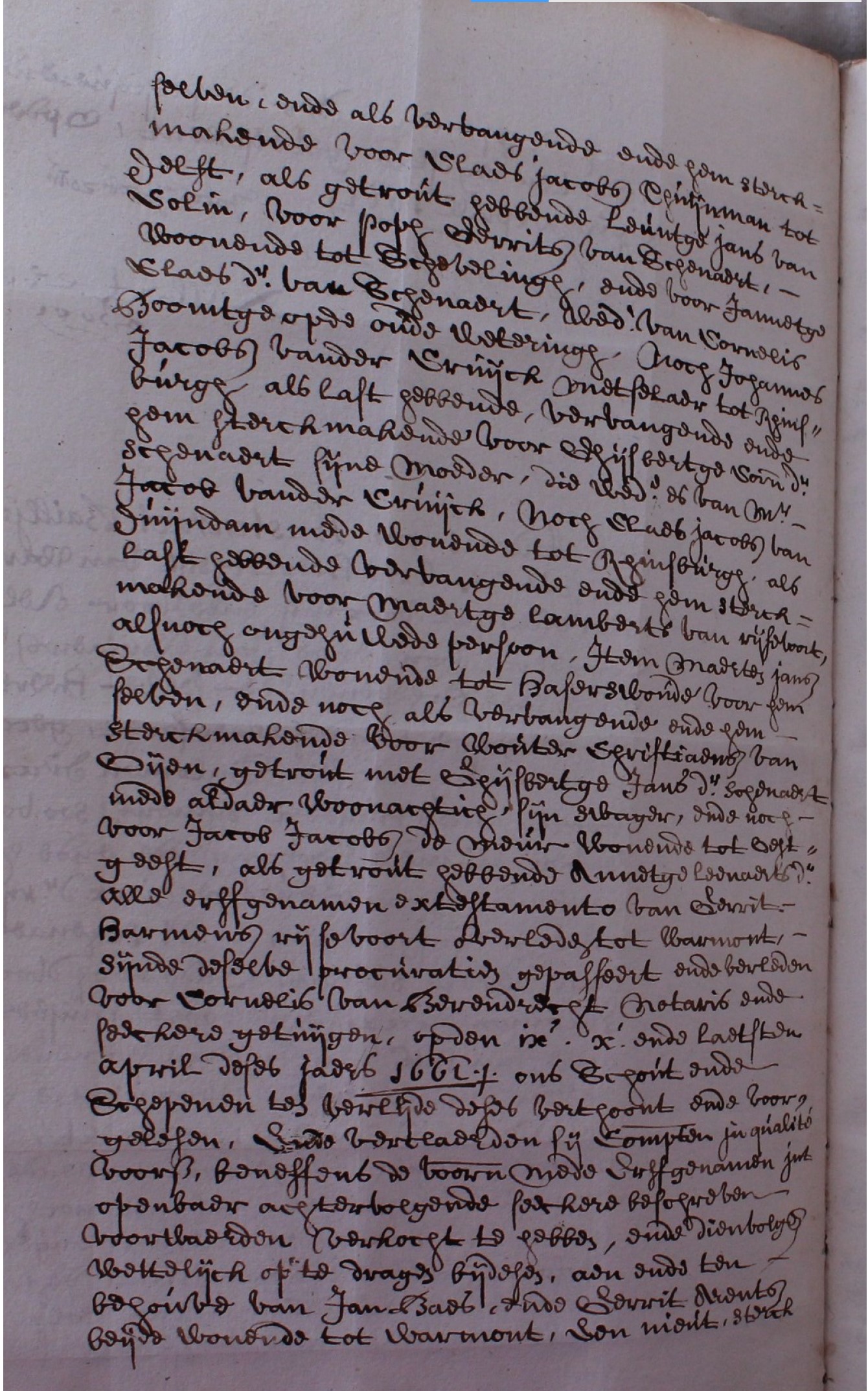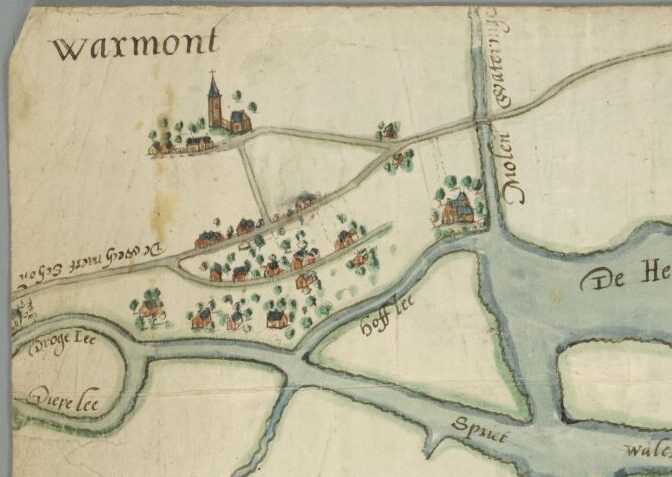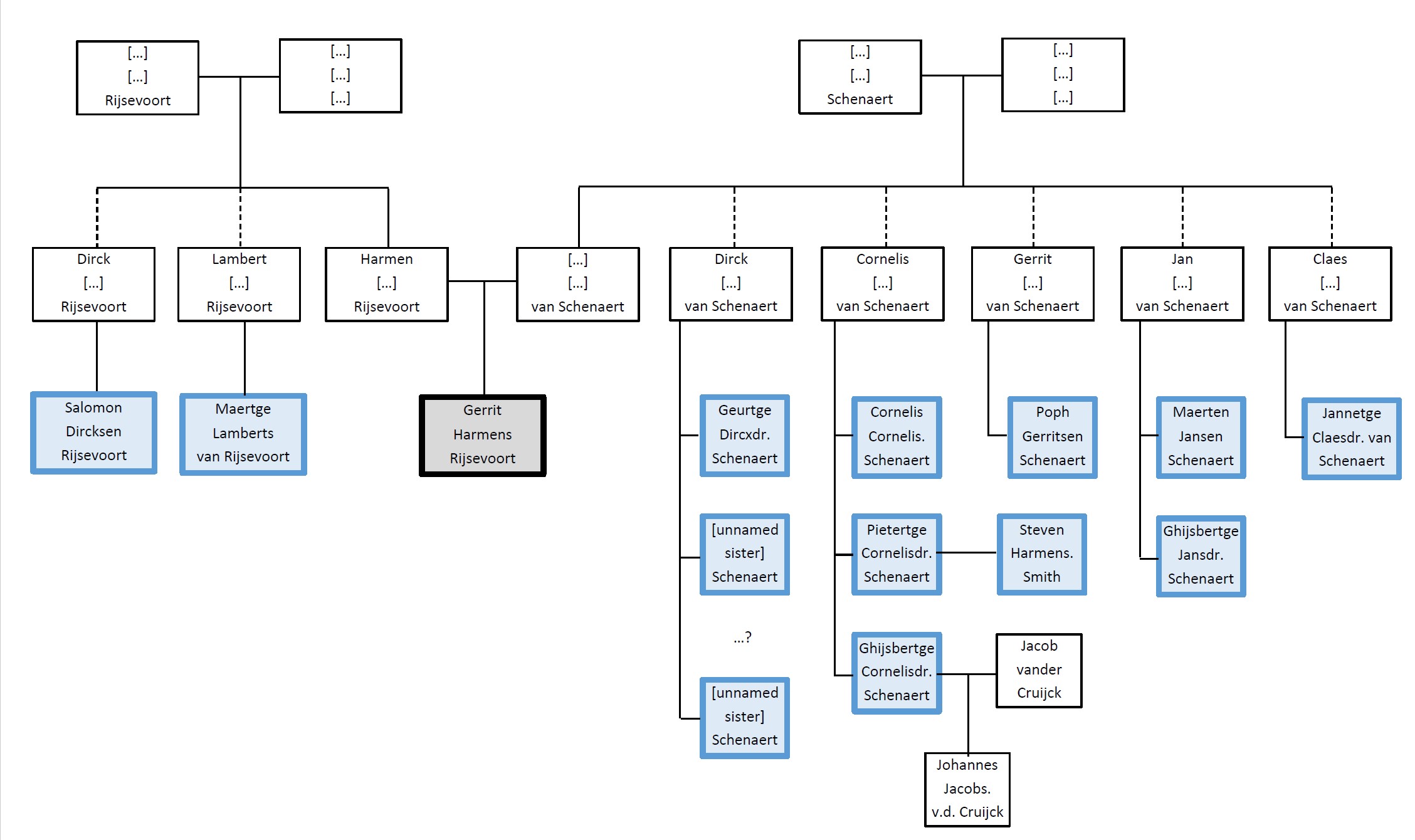Those who came to genealogy from a science background are likely familiar with “proof by contradiction”—a way to prove a theory by demonstrating that its opposite leads to an insupportable contradiction.[1] Many genealogists use this technique, often implicitly. Whatever the name, genealogists benefit from understanding how to apply the technique to improve research efficiency and focus.
Using proof by contradiction, a three-step mathematical example proves the theory that there is no greatest natural number.[2]
| 1. Assume the theory is false. | Suppose a greatest natural number exists. |
| 2. Show the contradiction. |
If there is a greatest natural number, then every number that exists is less than or equal to the greatest number. Add one to the greatest number. This new number is greater than the greatest number, which contradicts the previous statement that every number is less than or equal to the greatest number. |
| 3. Draw a conclusion. | The assumption that a greatest number exists must be false. Therefore, no greatest natural number exists. |
Negative evidence
In genealogy a variation on proof by contradiction uses negative evidence—the absence of information where it is expected.[3] As one of three types of genealogical evidence, its skillful use helps to establish the validity of conclusions. Negative evidence often allows us to rule out a hypothesis. We expect to find certain information if a hypothesis is true. Lack of finding that information after thorough research contradicts our assumption, and so our hypothesis must be false.
Developing hypotheses and testing for contradictions helps focus our research. It is a technique we use in the third criteria of the Genealogical Proof Standard (GPS)—“critical tests of relevant evidence through processes of analysis and correlation.”[4] Genealogy rarely deals with mathematical absolutes, instead we must meet the five criteria of the GPS to consider a conclusion proven.
The heirs of Gerrit Harmens Rijsevoort
A deed from the Netherlands demonstrates how negative evidence and contradictions help focus research into the identity of Gerrit’s parents.


On 16 May 1661, the heirs of Gerrit Harmens Rijsevoort sold a house in Warmond, the Netherlands, to Jan Baes and Gerrit Arents. The record gives the names of Rijsevoort’s heirs according to his will, but does not state their relationships to the deceased.
- Salomon Dircxsen Rijsevoort
- Huijbert Sijmonsen
- Geurtge Dircxdr. Rijsevoort
- Meijnsge Gerritsdr. Schenaert and her sisters
- Cornelis Cornelissen Schenaert
- Steven Harmensen Smith, married to Pietertge Cornelisdr. Schenaert
- Maertge Pietersdr. Schenaert, unmarried
- Claes Jansen van Solm
- Claes Jacobsen Thuijnman married to Leuntge Jans van Solm
- Poph Gerritsen van Schenaert
- Jannetge Claesdr. van Schenaert
- Ghijsbertge Cornelisdr. Schenaert
- Maertge Lamberts van Rijsevoort, unmarried
- Maerten Jansen Schenaert
- Wouter Christiaensen van Oijen, married to Ghijsberttge Jansdr. Schenaert
- Jacob Jacobsen de Meur, married to Annetge Lenaertsdr.[5]
To analyze a record, a researcher needs to understand its context.[6] In this case, two Dutch naming traditions provide essential background for interpreting the record.
- A patronymic was often used to identify a person’s father.[7] “Harmensen” means son of Harmen; “Gerritsdr.” means daughter of Gerrit. Some people went by their first name and patronymic only, while others used a first name and patronymic in addition to a last name.
- Children were almost always named after relatives in a strict pattern—the first two sons were named after the grandfathers and the first two daughters were named after the grandmothers.[8]
Does the deed list the descendants of Gerrit Harmensen Rijsevoort or are the heirs a group of collateral relatives?

Map of Warmont in 1617 (public domain)
The deed mentions that Gerrit Harmensen Rijsevoort named the heirs in his will, so he could have deviated from the standard arrangement. Without a will, his estate would be divided equally between his children or their descendants, between his siblings or their descendants if he did not leave any children, or equally between the heirs of his father and his mother if he had no children or siblings or if they did not leave any descendants.[9]
In most cases in the Netherlands, wills did not seriously alter where most of the estate ended up. Under the law of the province of Holland, a parent could not disinherit a child, except in rare cases.[10] The will might have included some bequests or entitled somebody to an extra portion upfront, or could have disinherited some collateral heirs either completely or skipped over in favor of their children, but in most cases the majority of the estate would still have gone to people who would have inherited if there was no will. Therefore, the heirs in the will are probably relatives of Gerrit Harmensen Rijsevoort, but there may be relatives missing who got disinherited or skipped.
Three hypotheses about the heirs are tested to see if any lead to a contradiction.
Hypothesis 1: The heirs are descendants of Gerrit Harmensen Rijsevoort.
If Gerrit Harmensen Rijsevort had children, “Gerritsen” or “Gerritsdr.” would be their patronymic. No persons named [—?—] Gerritsen or Gerritsdr. Rijsevoort are found among the heirs, so the list does not include Gerrit’s children.
No heirs are called Gerrit, a name we would expect to see among his grandchildren, since the first-born son was traditionally named after his paternal grandfather and the second-born son after his maternal grandfather.
None of the heirs are named Harmen, or [—?—] Harmens Rijsevoort, a name we would expect Gerrit to give his son and that we would expect to see as a patronymic among his grandchildren.
Since the heirs’ names do not match the names that we would expect to see if they were children or grandchildren of Gerrit Harmensen Rijsevoort, hypothesis one is probably incorrect.
Hypothesis 2: The heirs are descendants of Gerrit Harmensen Rijsevoort’s siblings.
If Gerrit Harmensen Rijsevoort had siblings, they would have shared the same patronymic, Harmensen or Harmensdr. None of the heirs were called [—?—] Harmensen (or Harmensdr.) Rijsevoort, therefore no siblings inherited in 1661.
We would expect to find the name Harmen among his siblings’ sons, named after their grandfather, but no heirs have Harmen as a first name. We would expect the name Harmensen or Harmensdr. as a patronymic among the grandchildren of the siblings. Only Steven Harmensen Smith had Harmensen as a patronymic, but his marriage to Pietertge Cornelisdr. Schenaert—who has a last name shared by several heirs—suggests that he was an heir as the husband of his wife, not on his own behalf.
The absence of the name Harmen, Harmensen, or Harmensdr. among the heirs suggests that they were not descendants of Gerrit’s siblings.
Hypothesis 3: The heirs are descendants of siblings of Gerrit Harmensen Rijsevoort’s parents.
The number of Van Schenaert heirs suggests that Gerrit Harmensen Rijsevoort’s mother could have been a Van Schenaert. The Van Schenaert heirs might have been her siblings, nieces and nephews, or grandnieces and grandnephews. The presence of several Van Schenaert heirs with the patronymic Gerritsen or Gerritsdr. suggests that Gerrit may have been her father’s name and that Gerrit Harmensen Rijsevoort was named after his maternal grandfather.
Gerrit Harmensen Rijsevoort’s father Harmen might have had brothers Lambert and Dirck, which accounts for the presence of Salomon Dirxsen Rijsevoort, Geurtge Dircxdr. Rijsevoort, and Maertge Lamberts van Rijsevoort among the heirs. Claes and Leuntge Jansen van Solm might have had a Rijsevoort or Van Schenaert mother, and so could Huijbert Sijmonsen and Jacob Jacobsen de Meur or his wife Annetge Lenaertsdr.
If the heirs were descendants of siblings of Gerrit Harmensen Rijsevoort’s parents, rather than descendants of his own children or of his siblings’ children, that would also explain the large number of heirs and the many different names.
The hypothesis that the heirs were descendants of the siblings of Gerrit Harmensen Rijsevoort’s parents is consistent with the evidence from the record and the social context of the time and place.

Hypothetical tree for the heirs in the deed
Conclusion
Formulating and testing hypotheses about the relationship between Gerrit Harmensen Rijsevoort and his heirs reveals that the first two hypotheses are likely incorrect, whereas the third hypothesis is likely to be valid. The heirs are descendants of siblings of Gerrit Harmensen Rijsevoort’s parents. To find the common ancestor of all the heirs requires research back two generations. We can use that information to formulate a research plan that meets standards for efficient sequencing of the next research steps.[11] That research plan would include searching for the will of Gerrit Harmensen Rijsevoort and for a marriage between Harmen [—?—] Rijsevoort and [—?—] Gerrits Schenaert.
Proof by contradiction—creating hypotheses and testing to see if they lead to contradictions and invalid assumptions—is a powerful technique. It can show us which hypotheses are more likely to be correct and help focus our research on the most likely scenarios.
A version of this article first appeared in the September 2017 issue of OnBoard, the newsletter of the Board for Certification of Genealogists. Websites were viewed on 7 August 2017.
Notes:
[1] For the mathematical concept of proof by contradition, see Margaret M. Fleck, Building Blocks for Theoretical Computer Science, version 1.3, 1 January 2013, PDF (http://mfleck.cs.illinois.edu/building-blocks/version-1.3/whole-book.pdf), 196–200 for ch. 17 “Proof by Contradition.”
[2] See for example Rashid Bin Muhammed, “Proof by Contradiction,” Kent State University (http://www.personal.kent.edu/~rmuhamma/Philosophy/Logic/ProofTheory/proof_by_contradiction.htm). For natural numbers, also known as counting numbers or positive integers, see Eric W. Weisstein, “Counting Number,” Wolfram MathWorld (http://mathworld.wolfram.com/CountingNumber.html).
[3] Board for Certification of Genealogists, Genealogy Standards (Nashville, Tenn.: Ancestry, 2014), 71 for “negative evidence.”
[4] Genealogy Standards, 2.
[5] Heirs of Gerrit Harmens Rijsevoort to Jan Baes and Gerrit Arents, deed of sale, 16 May 1661; Schout en Schepenen Warmond [Sheriff and aldermen of Warmond], Protocol van allerhande akten [Protocol of miscellaneous records], 1 October 1658–16 November 1664, fol. 153r–154r; call number 1199, Gemeente Warmond [Municipality of Warmond], Record Group 0600; Erfgoed Leiden en Omstreken, Leiden, the Netherlands.
[6] Genealogy Standards, 17 for Standard 24 “Understanding meanings” and 34–35 for Standard 57 “Background information.”
[7] Rob van Drie, Dutch Roots (The Hague: Centraal Bureau voor Genealogie, 2012), 100-102.
[8] Van Drie, Dutch Roots, 96.
[9] Eduard van Zurk, Codex Batavus … Hedendaegse Rechten, vol. 2 (Rotterdam: Jan Daniel Beman en zoon, 1757), 1085—1099; digital version, Google Books (https://books.google.nl/books?id=vGRbAAAAQAAJ). This book records the common law of Holland, as it had been in use for centuries.
[10] Van Zurk, Codex Batavus, vol. 2, 1105—1113, particularly no. XIII.
[11] Genealogy Standards, 13 for Standard 15 “Efficient sequence.”


Fascinating. I’ll put a link to this post in my next email newsletter.
Great to hear!
This was such an interesting article Yvette and I liked the sequence you followed for the argument.
This is what makes researching late 18th Century-early 19th families of Dutch descent in the Hudson Valley, NY challenging. They often followed the naming patterns of naming the first 2 children after the paternal grandparents – but not always. Many started adopting more English naming patterns and in the 19th Century as more intermarriage between English & Dutch happened, everyone started naming their children after their colleagues & neighbors.
Just as was thinking I haven’t seen Yvette’s newsletter for a while, I received today’s version. Which let me to this article I had missed earlier. I really appreciate the educational part of you blogs and especially the ones that focus on the theory of genealogy.
Thank you very much for this refresher course and the clear way you document the steps that lead to the end result.
You’re welcome, thanks for letting me know the article is useful!